We all know the grade school ditty about beans, right? Well, they may make you toot, but beans are something to toot about, too! Different types of beans and legumes can require different cooking methods. Here’s what you need to know about cooking dry beans, along with a dozen recipes to try at your place.
Dried beans are cheap, they’re easy to store for long-term use, and they’re high in protein.
Originally published November 2019; this post has been updated.
High Protein Dry Beans
Beans are an excellent source of protein and fiber, making them an especially good choice for vegetarians. While the protein content varies a bit depending on the types of beans, they provide about 40 grams of protein per cup.
Get to Know Beans
Beans are part of the legume family. The dried beans you cook with grew on a plant very similar to the green beans you grow in your garden. Instead of harvesting the pod while it’s young and tender, though, the bean pods are allowed to mature, then the seeds (beans) are removed and dried.
5 Easy Steps to Transform Your Pantry!
Ready to switch from store bought to homemade? Let me help you make some changes! Grab my FREE five-part guide to getting started.
You can even grow and dry your own beans for storage right in your backyard, though it requires a substantial amount of room to generate a good harvest.
Different Types of Beans
There are numerous types of common beans (Phaseolus vulgaris), including white, purple, green, black, brown, and speckled varieties.
Kidney beans: Shaped like a kidney (thus their moniker), kidney beans can be light or dark red in color. Red kidney beans tend to have a somewhat tough skin and retain their shape well when cooked. Toss them into a green salad to boost the nutrient level, use them in chili or bean soups, make traditional red beans and rice, or add them to bean recipes where a firm bean is desired.
Pinto beans: Commonly used in Mexican dishes, dry pinto beans are a mottled pinkish brown in color and soften substantially when cooked.
Black beans: Smaller than both kidney beans and pinto beans, black beans — frijoles negros — are commonly used in Hispanic dishes coupled with onions, tomatoes, and spices.
White beans: Roughly the same size as black beans, we use these small beans to make ham hocks and beans. There are a number of white bean varieties commonly available. I like the smaller ones we call Navy beans.
Garbanzo beans (Cicer arietinum): Also called chickpeas, garbanzo beans are from a different genus than the common bean. These legumes are much more round in shape than kidney beans, pinto beans, or black beans. A light brown in color, garbanzo beans are often purchased in cans, but they’re available as a dried bean, too. Couple them with red kidney beans and fresh green beans for a three bean salad.
Lentils (Lens culinaris): These legumes are, again, different from common types of beans, but I use them similarly for cooking. Lentils are much smaller than beans and shaped like a small, round disk, about an 1/8″ in diameter. Like beans, lentils need to be cooked, but the cooking time required is substantially less than most beans.
Admittedly, the biggest drawback to cooking dry beans is the length of time it takes. Cooking dried beans is not difficult; it just requires a bit more forethought than simply opening a can of beans.
Soaking Dried Beans
Soaking beans in water for eight hours or overnight is a good idea when making most bean recipes. It can cut cooking time, plus soaking beans helps eliminate some of the phytic acid in beans. Phytic acid is considered an “anti-nutrient.” You can read more about that here.
Some people consider it optional, especially when using the Instant Pot, since it’s easy to cook beans under pressure, even without soaking. I always soak dry beans.
To soak dried beans, cover them with 2″ of water and allow to sit for 8 hours or overnight. Drain, discarding the water. Add the soaked dry beans to the recipe according to the instructions.
While soaking can help to eliminate some of the phytic acids that can cause stomach upset, it’s also crucial that you cook dried beans completely. Eating undercooked beans that have phytohaemagglutinin can cause severe vomiting and diarrhea, and some instances have even required hospitalization. This is especially true of kidney beans.
Cooking Beans on the Stove Top
To cook dry beans on the stovetop, put beans in a large pot. Add enough water or broth to cover the beans by 4-5″ or so. Soak eight hours or overnight. Drain soaked beans and add fresh water to cover beans by about three inches.
Cover the pot, but tilt the lid so that air can escape to prevent boil overs. Bring to a boil, then simmer for about an hour and a half until beans are tender. Discard the cooking liquid and add beans to recipes as instructed.
Drain beans, and then use in one of the bean recipes below.
Cooking Dried Beans in an Instant Pot
The Instant Pot makes quick work of dried beans. This electric pressure cooker can fully cook dry beans in about an hour, even if you opt not to soak them.
Do Not Cook Dry Beans in a Slow Cooker
DIY Canned Bean Recipe
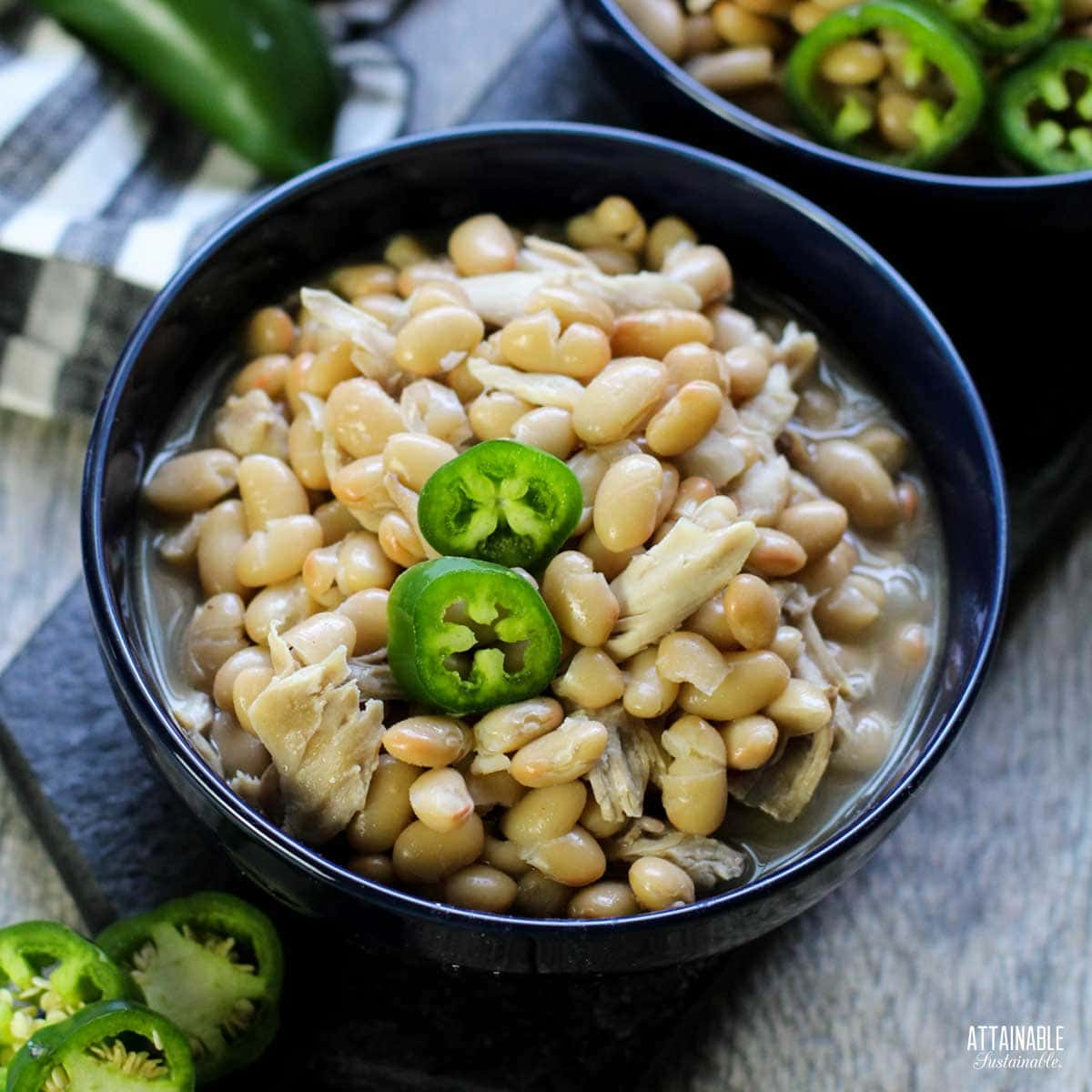
Bean Recipes to Try
The bean recipes below are a great place to start! Calling for various types of beans, try them as snacks, a hearty side dish, or as a main course meal.
12+ Delicious Bean Recipes to Make!
These budget friendly bean recipes will get you cooking up some delicious meals!
Fava Bean Hummus
This delicious fava bean hummus has a nutty flavor, perfect for spreading on crackers, dipping vegetables, or adding protein to a vegetarian sandwich.
Easy White Bean Chicken Chili
One of my family’s favorite “fast food” meals, this recipe requires only six ingredients and comes together in a hurry. Top with a dollop of sour cream, sliced avocados, and jalapenos.
Homemade Refried Beans
This family favorite refried beans recipe is excellent, and way less expensive than the canned version. Serve them with your favorite Mexican dinner or roll them up into burritos.
Easy & Healthy Hummus Bowls
Enjoy the ease of homemade hummus bowls for a healthy and delicious meal. Invite everyone to make their own to accommodate different palates!
Instant Pot Chili
Comfort food in a hurry! This ground beef chili recipe has all the flavor you love in a chili, with the speed of fast food. Flavored with garlic, chili powder, bell peppers, and onion, they're a delicious addition to the menu!
Easy Black Bean Salsa
This flavorful corn and black bean salsa looks beautiful on a buffet table, plus it’s super easy to make. Serve it on lettuce for a hearty salad, too!
3 Bean Chili (EASY!) in the Instant Pot
No more tedious, time consuming cooking, just combine all of the ingredients together in your electric pressure cooker, and voila!
Instant Pot Refried Beans
Build a better burrito with these Instant Pot refried beans! Homemade from dried beans, they’re budget friendly and a great addition to taco night or added to vegetarian enchiladas.
Easy Lentil Soup Recipe
This easy lentil soup recipe with sausage comes together quickly and uses ingredients that you likely already have on hand. Garnish with fresh parsley for a company-worthy meal.
Vegan Lentil Soup Recipe
Make this vegan lentil stew for a budget-friendly, hearty meal. Your omnivore friends won’t even notice it’s meatless. (It’s ready in about an hour!)
Spicy Chipotle Hummus Recipe
This spicy chipotle hummus recipe is easy to make and a great addition to wraps or game day appetizers. So much better than store bought!
Roasted Red Pepper Hummus
Save cash at the checkout line by making your own roasted red pepper hummus. It’s a favorite appetizer at picnics and potlucks; serve with veggies or spread inside a wrap for lunch.
Easy Garlicky Hummus Recipe
This easy hummus recipe is fabulous served with a bit of feta cheese and kalamata olives. It’s a great appetizer or light lunch.
Hummus Pizza Flatbread
This hummus pizza has just a few ingredients. Make the pizza dough ahead of time and you can assemble these artisan flatbreads for a simple lunch for guests.
Friendship Soup Mix in a Jar
This layered dry mix is perfect for gift giving. Just print out and tie on instructions for using it!
Easy Pasta e Fagioli in a Slow Cooker
Filled with nutritious vegetables, beans, and pasta, this is the perfect soup to curl up with after a long day.
Source: Cooking Dry Beans Safely – https://enewsletters.k-state.edu/youaskedit/2017/10/13/cooking-dry-beans-safely/

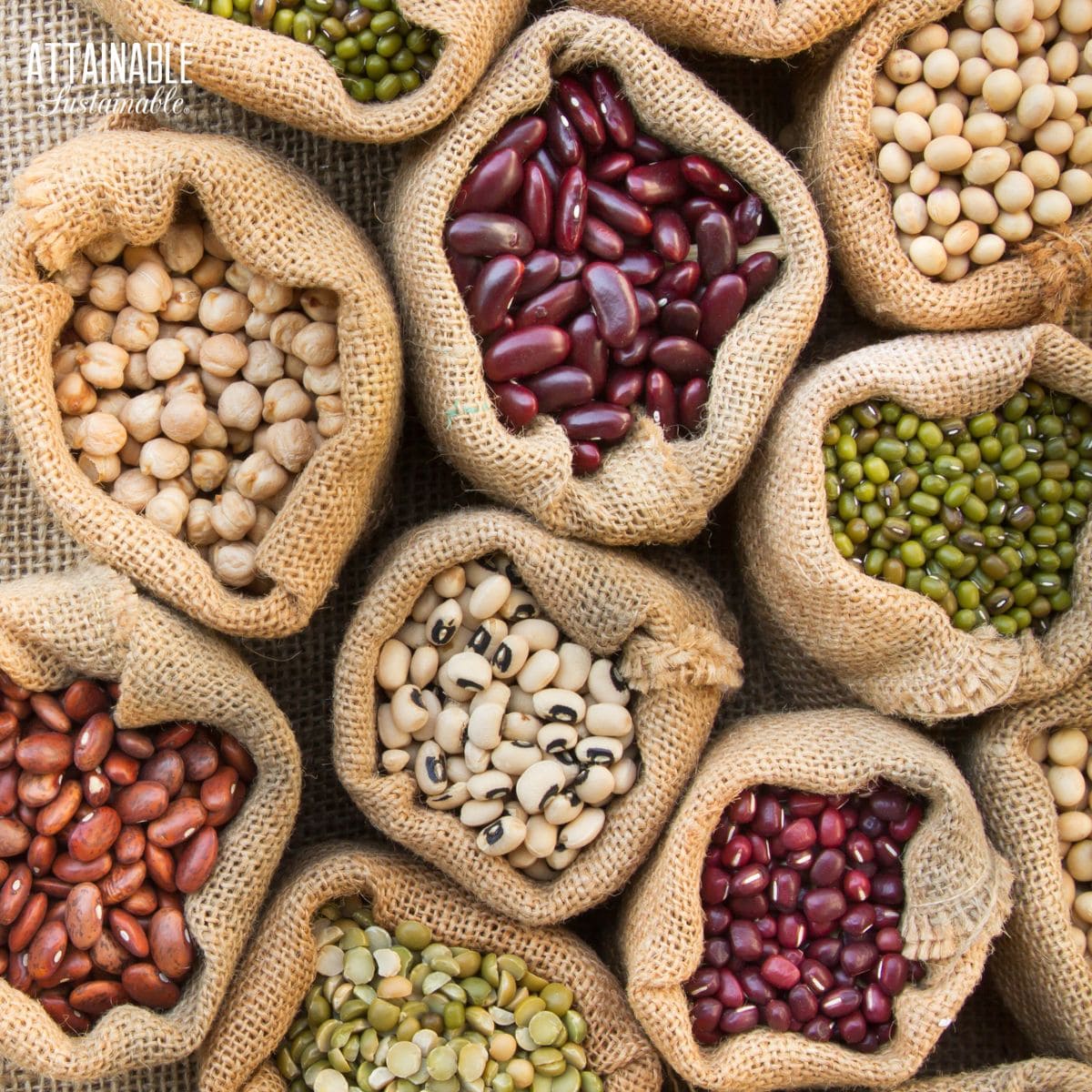
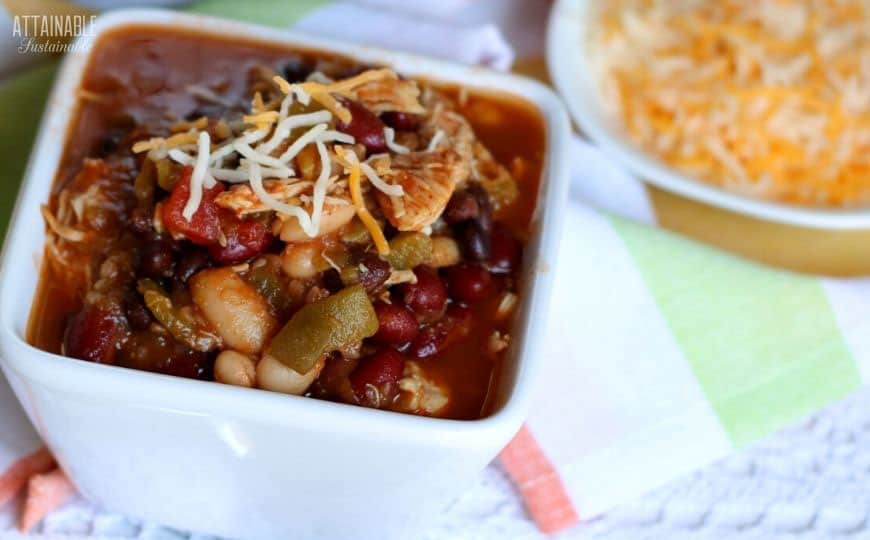

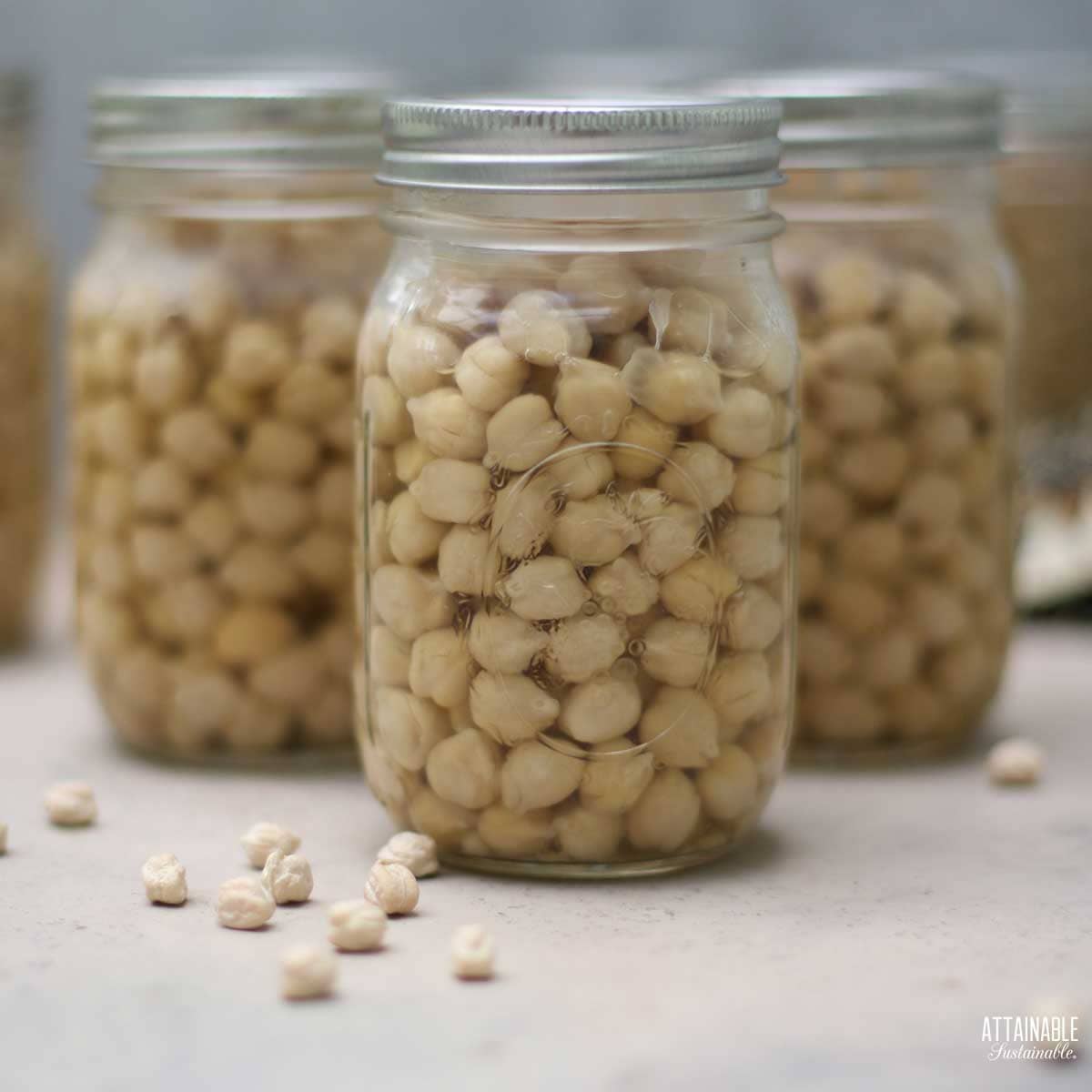
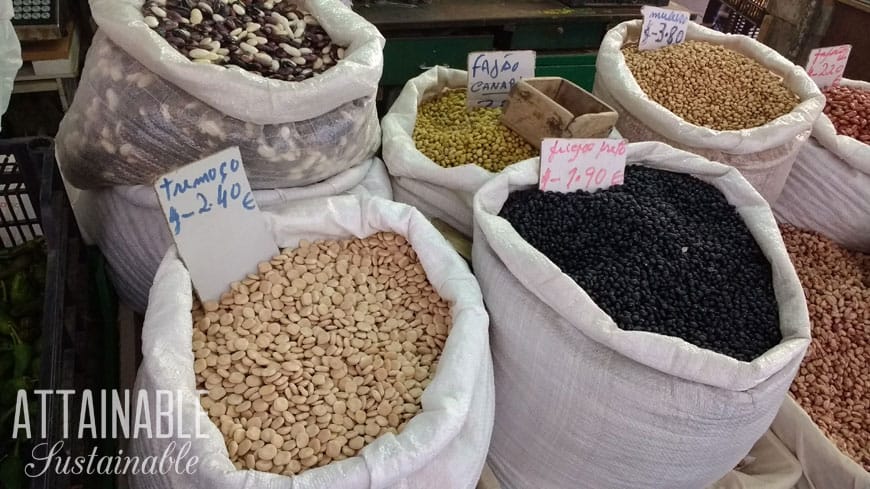
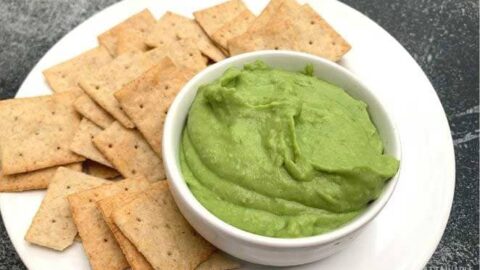
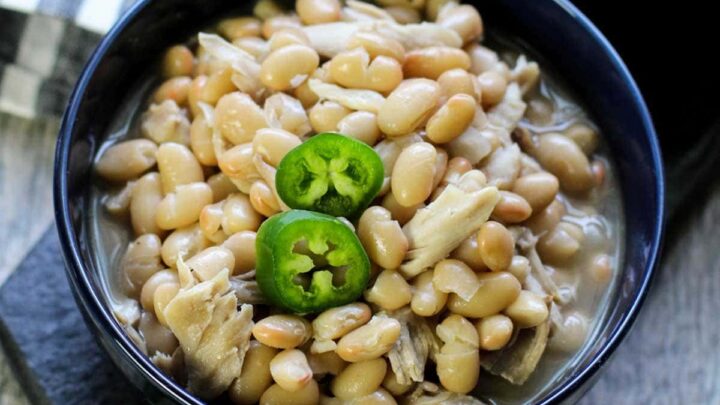
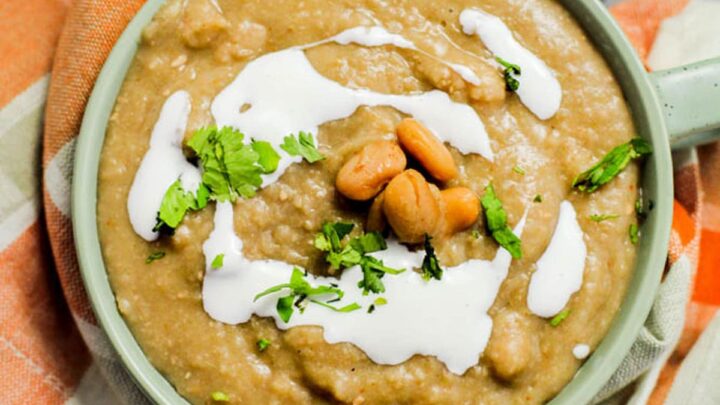
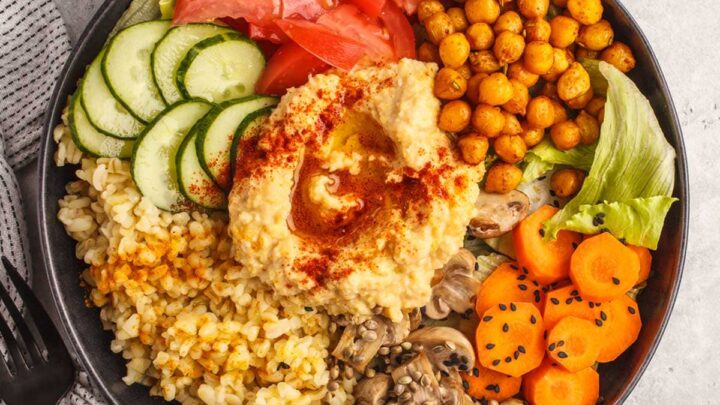
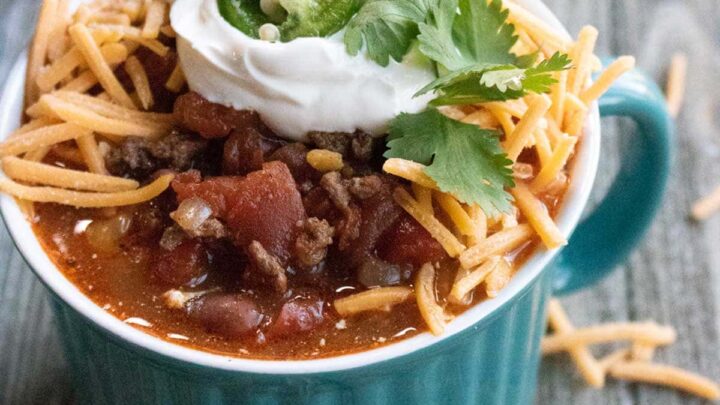
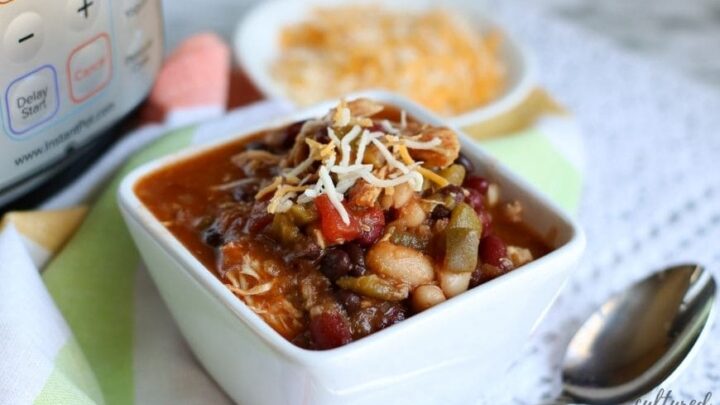
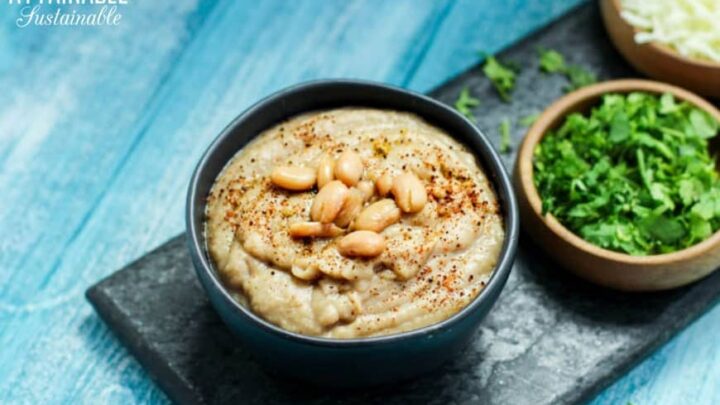
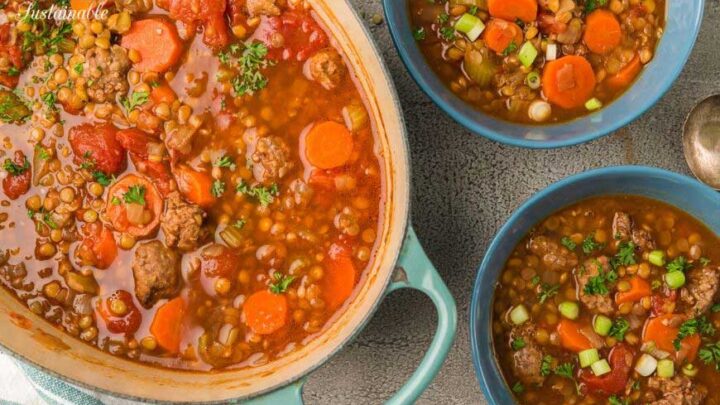
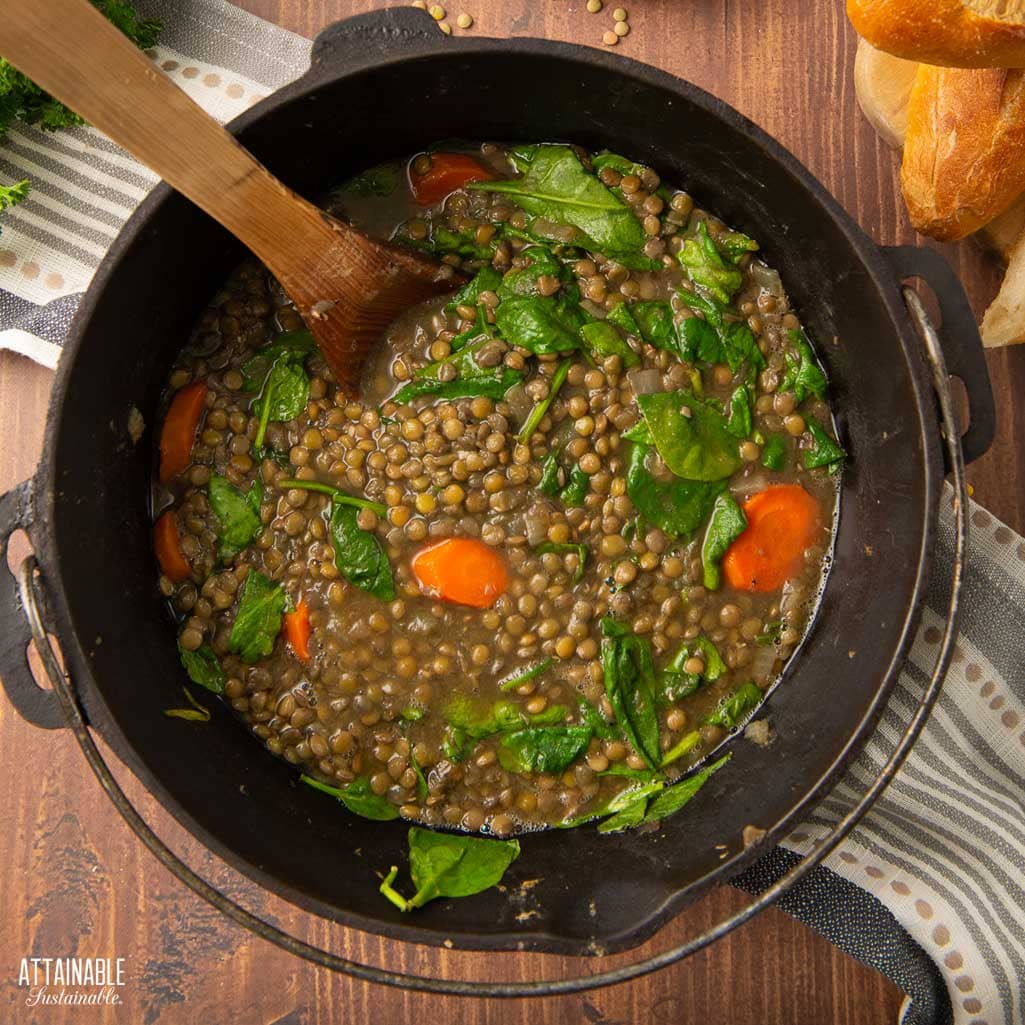
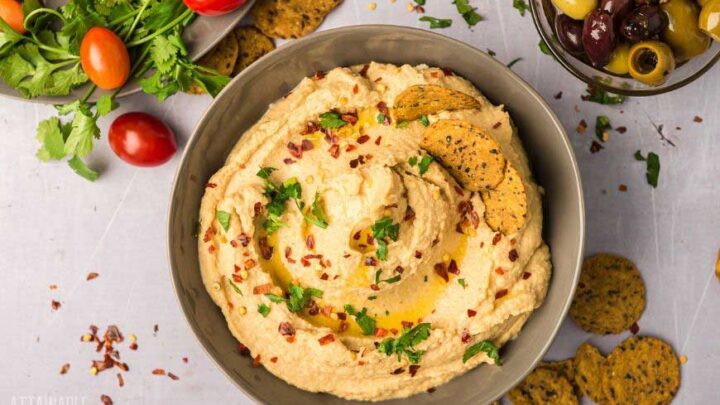
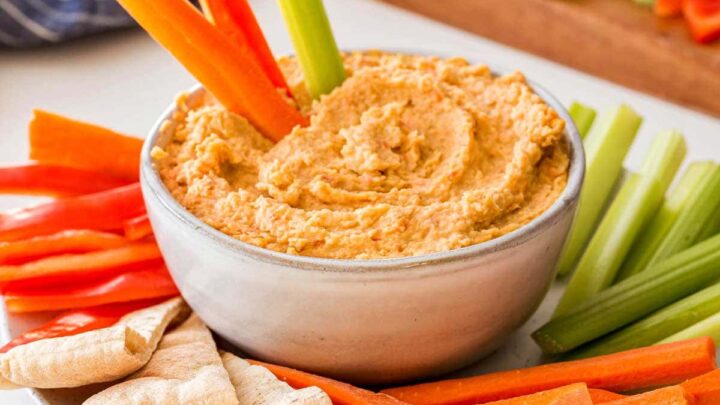
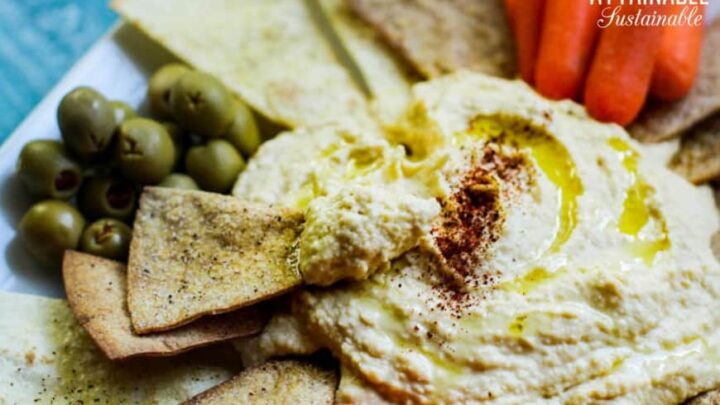

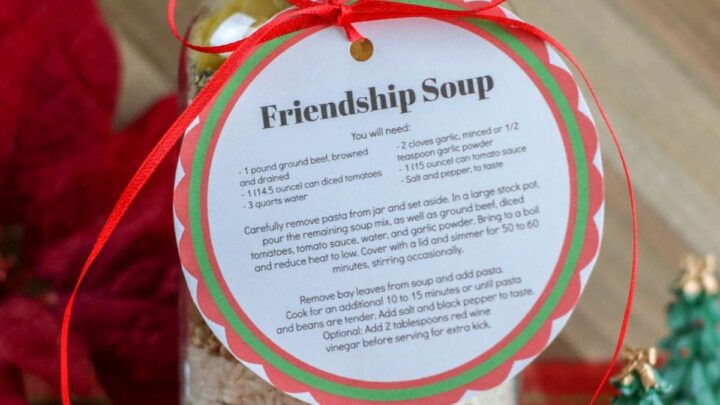
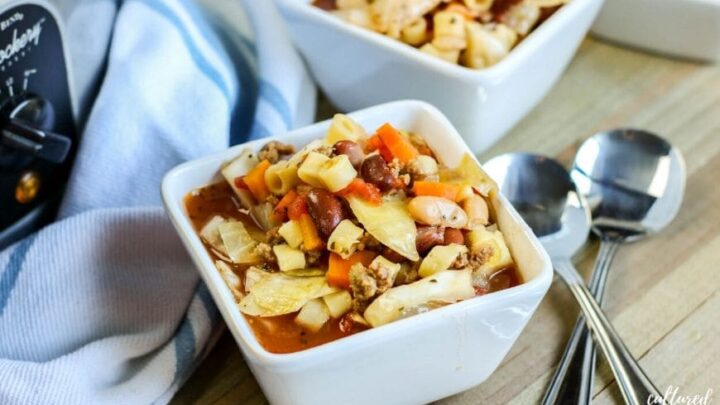
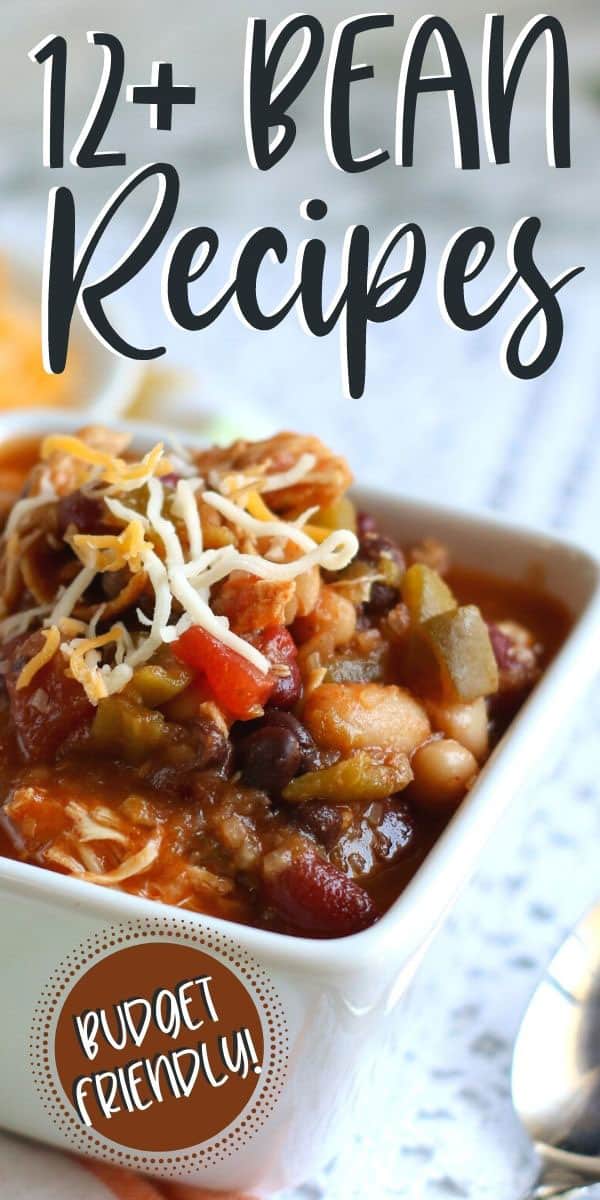

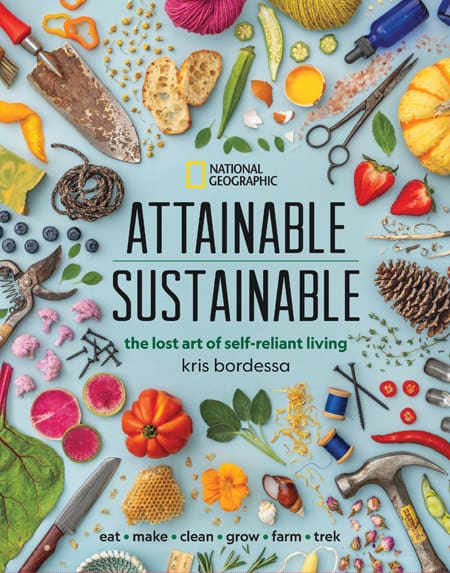
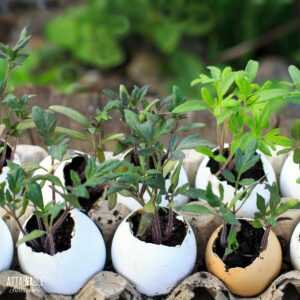
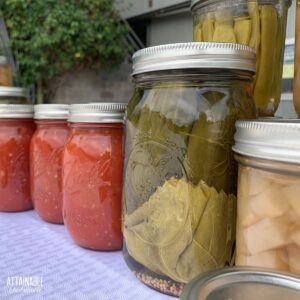
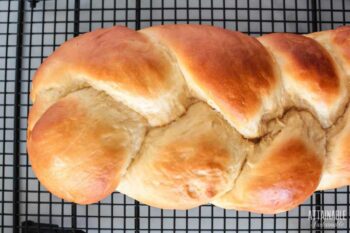
Is there more info about why it’s bad to cook beans in a slow cooker? I’ve cooked pinto beans several times in a crockpot and they came out perfectly every time. It was much more reliable than on top of the stove. I hope you can provide more details.
The FDA recommends against it because a slow cooker will likely not get hot enough to thoroughly cook beans. Beyond that you’ll have to do your own research to be sure!